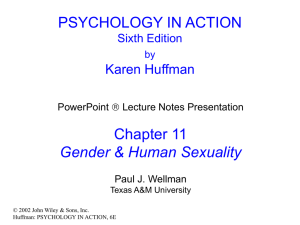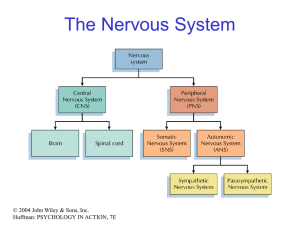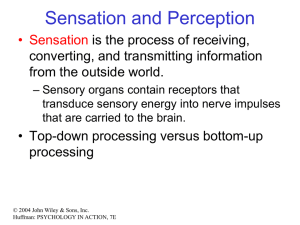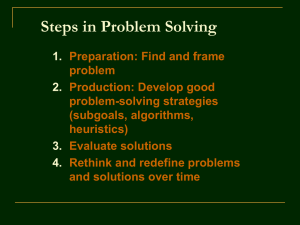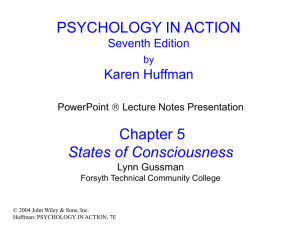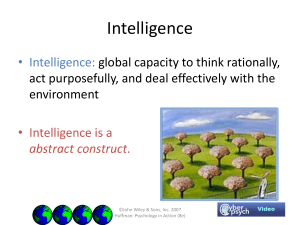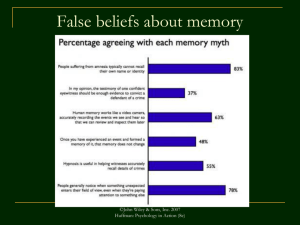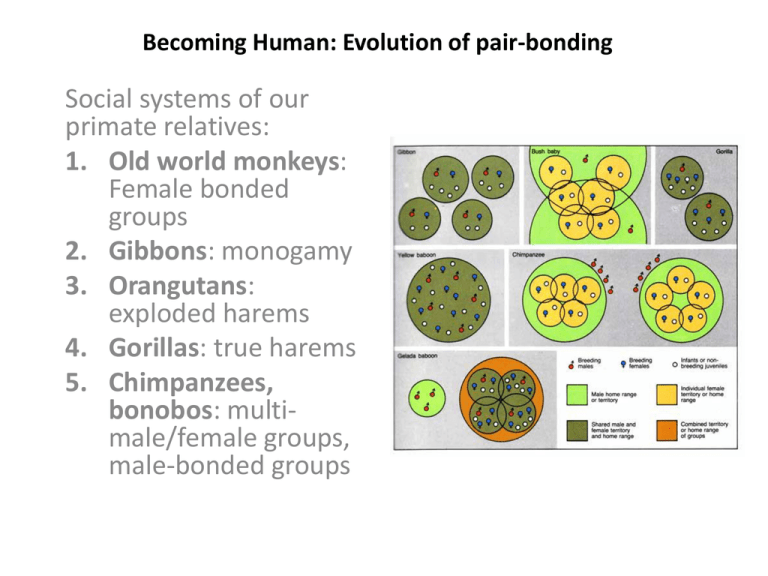
Becoming Human: Evolution of pair-bonding
Social systems of our
primate relatives:
1. Old world monkeys:
Female bonded
groups
2. Gibbons: monogamy
3. Orangutans:
exploded harems
4. Gorillas: true harems
5. Chimpanzees,
bonobos: multimale/female groups,
male-bonded groups
Early hominins
A. ramidus (Ardi) low sexual dimorphism 5-4.4 mybp;
A. afarensis (Lucy) 3.3 mybp high sexual dimorphism
Australopiths are generally assumed to have had high male-male
competition; harems, single male – female bonded groups
Homo erectus: grade shift
• Increasingly dependent offspring
• Lower sexual dimorphism (increase in
female body size especially)
• Larger, more cooperative social groups
• Evolutionary dilemma – creating
cooperative muliti-male/female
breeding groups with high paternal
investment (which requires paternal
certainty)
• Canine model? High pa, but exclusive
breeding
• Primate model? Multiple breeding, but
low pa
Sexual selection: Hand axes over brawn?
Hand axe as sign of male quality?
Symmetry; appreciation of beauty;
resourcefulness; artistic skill?
Unused hand axes – practice; display?
Male domestication?
Beginning of the “meat for sex” deal?
Cooperative hunting among Homo
heidelbergensis
First spears 400,000 ybp (Schoningen, Germany)
Neanderthals: Sexual division of labor?
Some archaeological
evidence suggests less
sexual division of labor
among Neanderthals (lack
of ‘tailoring’ artifacts;
robustness of female
bodies).
Less division – more ‘fragile’
social system?
Clear division of labor in
traditional human
societies.
Sex role specialization
• Kuhn & Stiner (2006): Neanderthal remains provide no evidence of
“women’s work.”
• Neanderthal diet almost exclusively big game, no significant small game or
vegetable matter
• No evidence of bone needles or awls indicating tailored clothing
“No matter how one chooses to interpret the ethnographic
record, it is impossible to argue that Neandertal females and
juveniles were fulfilling the same roles … as females and juveniles in
recent hunter-gatherer groups” (Kuhn & Stiner, 2006, p. 958).
Evolution of Human Mate Attraction
• Using an evolutionary approach to explain why we are
attracted to certain traits in members of the opposite
sex.
• Operates at level of “gut” attractions, not conscious
evaluation
• Advantages of being male:
– Cheap sperm: relatively low parental investment cost
Disadvantage:
low paternity certainty
Advantage of being female:
High maternity certainty
Disadvantage:
costly eggs: relatively high parental investment
©John Wiley & Sons, Inc. 2007
Huffman: Psychology in Action (8e)
David Buss: Global study on mate attraction
Over 10,000 subjects from over 30 countries across the globe.
• Female attractions: decrease
parental investment by
getting good genes and
copious resources
• Male long-term mate
attractions: increase
paternity certainty, while
maximizing reproductive
output
• Both temporarily “blinded”
by romantic love
©John Wiley & Sons, Inc. 2007
Huffman: Psychology in Action (8e)
Evolved Male Attractions: Long-term mates – desire
for youth
©John Wiley & Sons, Inc. 2007
Huffman: Psychology in Action (8e)
Evolved Male Attractions: Beauty
©John Wiley & Sons, Inc. 2007
Huffman: Psychology in Action (8e)
Evolved Male Attractions: Chastity
©John Wiley & Sons, Inc. 2007
Huffman: Psychology in Action (8e)
Evolved Male Attractions: Long-term mates
Summary
• 1. Youth/Beauty: increase reproductive value in single mate
• 2. Chastity/youth: increasing paternity certainty in offspring to
be resourced
• Other relevant tendencies in males:
– Madonna/Whore dichotomy
– Sexual Jealousy module (sexual infidelity more arousing
than emotional infidelity)
– “mid-life” crises
©John Wiley & Sons, Inc. 2007
Huffman: Psychology in Action (8e)
Evolved female attractions: Long-term mates
Age
©John Wiley & Sons, Inc. 2007
Huffman: Psychology in Action (8e)
Evolved female attractions: long-term mates
Financial Prospects
©John Wiley & Sons, Inc. 2007
Huffman: Psychology in Action (8e)
Evolved Female attractions: Long-term mates
Good genes
©John Wiley & Sons, Inc. 2007
Huffman: Psychology in Action (8e)
Evolved Female attractions: Long-term mates
Good genes
©John Wiley & Sons, Inc. 2007
Huffman: Psychology in Action (8e)
Female evolved attractions:
summary
• 1. Older mate/good financial prospects:
status, stability, resources
• 2. Cues of masculinity: good genes
• 3. interaction with ovulatory cycle: evidence
for cuckoldry strategy?
©John Wiley & Sons, Inc. 2007
Huffman: Psychology in Action (8e)
Human mate attraction: Long term mates
• Males: young, beautiful,
sexually modest
• Reproductive value; paternity
certainty
• Females: older, high-status
(or potential), robust
• Good genetics, stable secure
source of resources.
©John Wiley & Sons, Inc. 2007
Huffman: Psychology in Action (8e)
Cross-cultural signally
©John Wiley & Sons, Inc. 2007
Huffman: Psychology in Action (8e)
Sexual Economics: Sex if the price is right for women (not men)
• Parental investment theory: Sex for women should
be viewed as rare and valuable with important
benefits (resources, long-term commitment, etc.).
Not so for men (less investing sex).
• Females, not males, generally react negatively to
explicit sexual images (cheapens sex).
• But female reactions to explicit sexual images are
more positive if paired with expensive, rather than
cheap product
Sex differences in Jealousy
• Hypothesis: If a major concern of males is paternity certainty and
major concern of females is securing resources, then emotions may
have evolved to protect this interests. Males more jealous of sexual
infidelity; female more jealous of emotional infidelity
Please think of a serious
committed romantic
relationship that
you have had in the past, that
you currently have, or that
you
would like to have. Imagine
that you discover that the
person
with whom you've been
seriously involved became
interested
in someone else. What would
distress or upset you more
(please circle only one):
(A) Imagining your partner
forming a deep emotional
attachment to that person.
(B) Imagining your partner
enjoying passionate sexual
intercourse with that other
person. (p. 252)
Controversy over
forced choice method;
stronger effects for
males than females
Recent review
(Saragin et al, 2012)
supports theory, but
more needed on
actual infidelity
Promiscuous vs. committed mating strategies: Shaping the
social context
• More religious/politically conservative = greater opposition to
recreational drugs
• More secular/politically liberal = acceptance of recreational drugs
• Why does anyone care about others use of recreational drugs?
• Ans: drugs connected to promiscuity; promiscuity connected to
mating strategy
• Committed mating strategy threatened by promiscuity;
philandering mating strategy aided by promiscuity
Darwinian strategy to happy marriage
• For females: Men want paternity certainty, so avoid all
jealousy-arousing behavior (don’t even look at other men).
Also, take good care of his genes (offspring).
• For males: Women want resources. All the money is hers.
Avoid spending money in any way she dislikes.
• For both: Both want health (good genes, fertility, etc.) Take
care of yourselves. Have some kids – lower divorce rate
among couples with kids.
©John Wiley & Sons, Inc. 2007
Huffman: Psychology in Action (8e)

